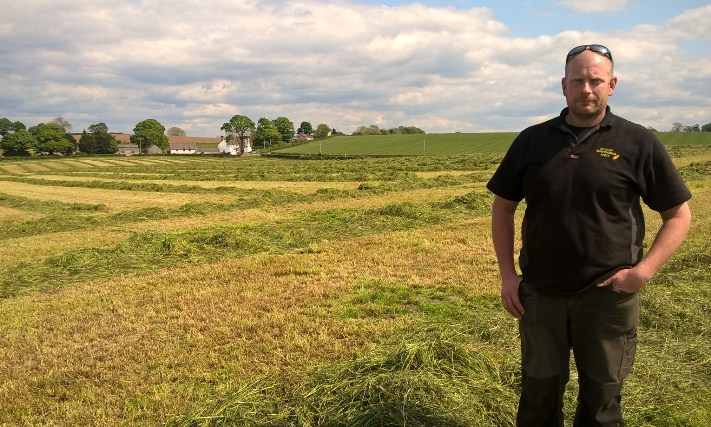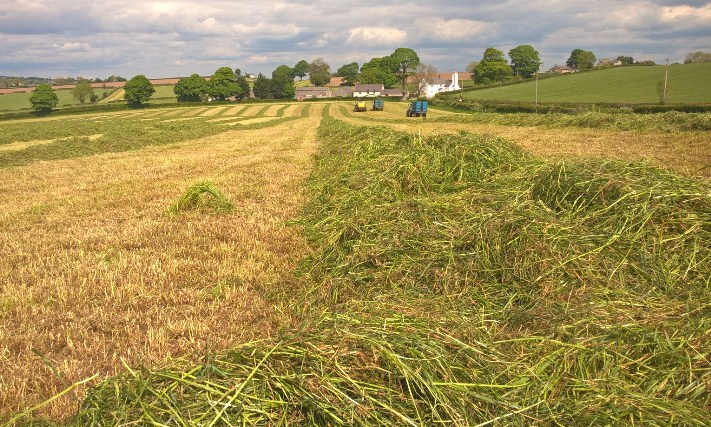Grass pulls through tough times on Rhuallt Hill
Landmark – Leys for diverse situations
Dairy farmer Aled Morris hedged his bets when reseeding a 6ha (15 acre) grass field, two miles from the A55 junction at Rhuallt Hill at Cwm Dyserth, drilling a mixture that does well both in drought and wet conditions.
Mr. Morris, who farms 245 ha (600 acres) at Marian Mawr with 400 high-yielding dairy cows and 300 followers, sowed Oliver Seeds’ Landmark EXTREME, a long-term mixture containing Lofa festulolium, late perennial ryegrass, cocksfoot, meadow fescue, timothy and white clover, at the end of May 2015.
“There is only 15 centimetres of soil over limestone rock in this field, so conditions are not great,” admits Mr. Morris. “In summer the grass can burn off, but the winters can be pretty wet with 838mm (33 inches) of rain, so we wanted a mixture that could cope with both.
“Landmark EXTREME seemed a good one to go for – it had previously been called Landmark DRYLAND, until results on farms showed it doing just as good a job in wet conditions too!”

Aled Morris is pleased with how well his new grass reseed has performed after a tricky start.
Spring barley cover
The grass was sown with spring barley as a cover for the grass. But the barley grew strongly and Mr. Morris decided to leave it until September to cut it for wholecrop silage.
“To be honest the grass looked dreadful underneath – very sparse and yellow,” says Mr. Morris. “I thought I would have to overseed it.”
Too late to apply nitrogen fertiliser, the field was lightly grazed with sheep for four weeks. Slurry was applied in February and a further 125kg N/ha fertiliser in March.
“The field has not looked back since then, it has grown and grown,” says Mr. Morris. “I was a bit sceptical about drilling cocksfoots and timothy and such like. It was too wet to let the cattle out this spring, so I shut it up for silage and it has made a tremendous crop. On the 15 acres we cut and carted nearly ten tonnes per acre.”

Osian Rhys Jones of Oliver Seeds was relieved but not surprised that the Landmark EXTREME pulled through the tough start.
“The mix of species in this mixture is ideal for conditions at 650ft up on Rhuallt Hill,” says Mr. Rhys Jones. “Donata, a soft-leaved cocksfoot with better palatability than some leading perennial ryegrasses, does particularly well in year two and Winnetou timothy loves cool and wet conditions.
“Lofa festulolium, which combines the good traits of ryegrasses and fescues, has great yield and quality and importantly in this case, great stress tolerance too. This is why Aled’s field has recovered so impressively.”
